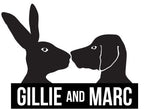Wild About Babies
Current Exhibition (Jan 2024 - Jan 2025)
Paternoster Square London, UK
Visit the sculpture, click for map >

About the Babies
A nearly universal trait among humans is the inherent inability to resist the charm of baby animals. This shared sentiment reaches beyond cultural boundaries, reflecting our profound connection with the innocence of nature. Overflowing with life and distinctive personalities, the sight of these creatures not only uplifts but also sparks an instinctual urge to protect. This sentiment forms the essence of the world's most impactful public sculpture in 2022, 'Wild about Babies.' Through this art, wildlife conservation transforms into a cause that resonates universally, urging everyone to join the fight.
About the Project
The sixth mass extinction has been coming to our headlines with increasing frequency, and as more and more research comes out, we are starting to see the stark reality of what this means. In January 2020, the International Union for Conservation of Nature (IUCN) listed 203 critically endangered mammalian species, including 31 which were tagged as possibly extinct. Wildlife is being faced with enormous challenges such as climate change and poaching, making their fight for survival harder every day.
We are the reason for this. We have lived as though we were separated from the earth, as though it was a resource to be exploited. But it doesn’t have to be like that. We can also be the saviour. It is now our responsibility to transform this age into one of regeneration, an age where the entire planet can work together with love to live in harmony.
In 2022, the public will have the opportunity to lead the movement to save baby animals all over the world. They will be first in line to get up close and personal with some of the most adorable yet endangered animals of our time and fall in love. With this love will spark a flame in the hearts of the people to give this new generation of wildlife and the generations that follow, a better start than their parents had, changing the course of mass extinction into one of life.

About the Sculpture
This sculpture will bring an adorable array of baby animals to the streets in partnership with the world’s most renowned wildlife charity, WWF. 20 cute yet magnificent newborns of all different species will be expertly crafted in bronze, each representing real baby animals from around the world.
A celebration of the incredible diversity of the animal kingdom, the babies will be made up of many different animals, from polar bears to koalas. Each will be approximately 1 meter tall, all interacting and playing with each other. They will each be at home in their natural environments with native rocks and plants included in the exhibition, showing the public each animal’s natural playgrounds and inviting them to play along too.
But every baby needs a mother to love and protect no matter what. These babies are all connected to their universal mother, a giant gorilla. Great and beautiful at 3 meters in height, s he sits with her arms spread wide, welcoming all the animals into the safety of her embrace. But this protection is not only for the 20 bronze babies, it is extended to all the humans who come her way, inviting them to join her in saving the baby animals of the world. This sculpture project is created to be interactive, giving the public a unique experience to touch, cuddle, and get up close and personal with some of the worlds most endangered species. Each individual sculpture will have a QR code attached where the public will be sent to information and pictures about the real-life animal in its natural habitat, giving a deeper understanding of wildlife in all its diversity.
Partner
One of the most exciting City developments, Paternoster Square, provides some 70,000m² of office space, retail outlets and cafes. The Square can trace its origins to medieval Paternoster Row, where the clergy of St Paul’s once walked holding their rosary beads and reciting the ‘Paternoster’, or Lord’s Prayer (Paternoster translates as ‘Our Father’).


